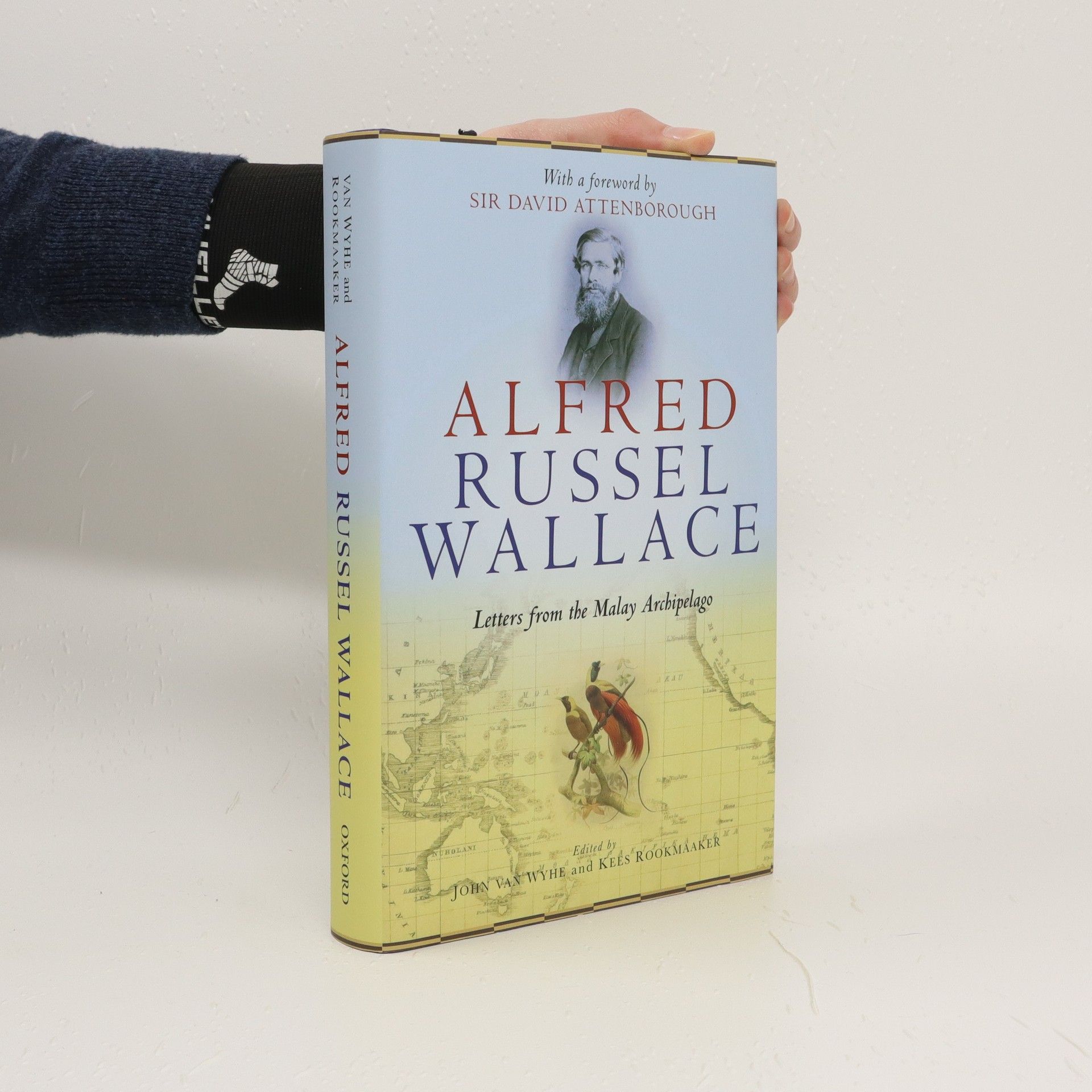Viaje al archipiélago malayo
- 315 páginas
- 12 horas de lectura
Este naturalista y explorador británico es célebre por proponer de forma independiente una teoría de la selección natural que impulsó a Charles Darwin a publicar su propia obra. Su extensa investigación de campo en la cuenca del Amazonas y el archipiélago malayo le llevó a identificar la Línea de Wallace, que divide a Indonesia en dos zonas biogeográficas distintas. Wallace fue un destacado experto del siglo XIX en la distribución geográfica de las especies, lo que le valió el título de «padre de la biogeografía». Además de ser codescubridor de la selección natural, sus contribuciones a la teoría evolutiva incluyen el concepto de coloración de advertencia y el efecto Wallace, que explica la especiación. También era conocido por su atracción hacia ideas poco convencionales como el Espiritismo y su crítica a la injusticia social.






The book is a facsimile reprint of a scarce antiquarian work, preserving its historical significance despite potential imperfections from its age, such as marks and marginalia. The publisher emphasizes its cultural importance, aiming to protect and promote literature by providing accessible, high-quality editions that remain faithful to the original text.
Delving into the natural history of islands, this work by Alfred Russel Wallace explores the unique ecosystems and biodiversity found in these isolated environments. Wallace examines the influence of geographic isolation on species development and the distinct characteristics of island flora and fauna. His observations contribute to the understanding of evolution and biogeography, making this a significant text in the study of natural sciences. The book combines scientific inquiry with vivid descriptions of island life, showcasing Wallace's keen observations and insights.
Darwinism - an exposition of the theory of natural selection, with some of its applications. 1891 is an unchanged, high-quality reprint of the original edition of 1891. Hansebooks is editor of the literature on different topic areas such as research and science, travel and expeditions, cooking and nutrition, medicine, and other genres. As a publisher we focus on the preservation of historical literature. Many works of historical writers and scientists are available today as antiques only. Hansebooks newly publishes these books and contributes to the preservation of literature which has become rare and historical knowledge for the future.
This volume of newly transcribed letters documents the travels of the Victorian naturalist Alfred Russel Wallace in the Malay Archipelago, during which he famously discovered natural selection independently of Darwin. Vivid with detail, the letters are fully annotated and accompanied by an introduction with a newly reconstructed itinerary.
Focusing on Wallace's extensive observations, this collection features essays that explore equatorial vegetation, animal life, and sexual selection. Born in Wales in 1823, Wallace's passion for natural history led him to the Amazon rainforest, where he spent four years studying its diverse ecosystems and cultures. His experiences there shaped his ideas on evolution, culminating in his co-discovery of natural selection alongside Darwin. This work highlights his significant contributions to natural sciences and evolutionary theory, enriched by a new introductory biography.
Racked with fever, virtually broke and earning a precarious living through sending back to London the plumes of beautiful birds, Wallace (1823-1913) ultimately became one of the most heroic and admirable of all scientist-explorers. Whether living with Hill Dyaks or hunting Orang-Utans or sailing on a junk to the unbelievably remote Aru islands, Wallace opens our eyes to a now long vanished world. Great Journeys allows readers to travel both around the planet and back through the centuries � but also back into ideas and worlds frightening, ruthless and cruel in different ways from our own. Few reading experiences can begin to match that of engaging with writers who saw astounding things: Great civilisations, walls of ice, violent and implacable jungles, deserts and mountains, multitudes of birds and flowers new to science. Reading these books is to see the world afresh, to rediscover a time when many cultures were quite strange to each other, where legends and stories were treated as facts and in which so much was still to be discovered.
Focusing on the remarkable advancements of the nineteenth century, this study delves into various fields such as locomotion, sea travel, photography, chemistry, and electricity. The author highlights significant industrial and scientific developments that shaped the era. With its comprehensive analysis, the book appeals to both historians and professionals in science and engineering, offering insights into how these innovations transformed society.
This classical work explores the Amazon River and its significance throughout history. Alpha Editions has taken care to preserve its legacy by republishing it in a modern format, ensuring clarity and readability through reformatting and retyping. The effort emphasizes the importance of keeping this influential text accessible for both present and future generations.
Focusing on Wallace's extensive observations during his travels in Asia, this work details his explorations of the Malay Archipelago, including regions like New Guinea and the Ke Islands. It highlights the diverse wildlife and the human cultures he encountered. The book also reflects Wallace's evolving thoughts on evolution, which ultimately contributed to his theory of natural selection, shared with Darwin. Accompanied by a new introductory biography, this republished edition showcases Wallace's significant impact on natural sciences and evolutionary theory.